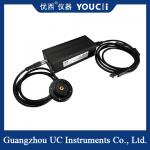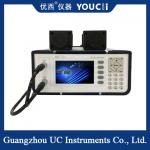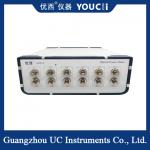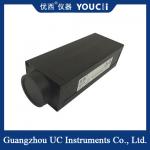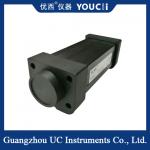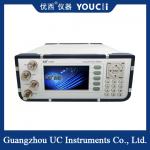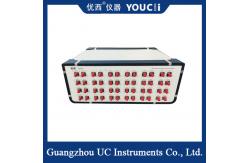48-Channel Economical Optical Power Meter Measures Multiple Optical
Paths Simultaneously
An optical power meter is an instrument based on the photoelectric
effect and optical detection technology used to measure the output
power of a light source and the power attenuation of an optical
signal in an optical fiber or optical waveguide.
The 48-channel optical power meter can simultaneously measure the
optical power of up to 48 different optical paths, greatly
improving the measurement efficiency and accuracy.
How it works:
The core component is a light detector, which converts light
signals into electrical signals. Common light detectors are
photodiodes (PD) and photomultiplier tubes (PMT).
When the light signal hits the surface of the light detector, the
energy of the photon stimulates the production of photoelectrons,
which forms a current or voltage signal. By measuring the size of
these electrical signals, the power value of the optical signal can
be obtained.
| Model # | U8201 | U8202 | U8248 | U820XH |
| Number of Channels | 1 | 2 | 48 | X |
| Power Range | +10 ~ -65dBm | +25 ~ -50dBm |
| Wavelength Range | 850 ~ 1700 nm |
| Calibration Wavelength | 850/980/1310/1490/1550/1610 nm |
| Application Fiber Type | Standard SM and MM up to 62.5 um core size |
Absolute Uncertainty (accuracy) at reference condition | ± 4% (1200 nm ~ 1610 nm) |
Relative Uncertainty (accuracy) at reference condition | < 0.02 dB Typical |
| Linearity (power) | ≤ ± 0.06 dB (1200 nm ~ 1610 nm, 0~ -50dBm) |
| Return Loss | > 40 dB |
| Operation Temperature | 0 ~ +40℃ |
| Storage Temperature | -30 ~ +80℃ |
| Recalibration Period | 2 years |
| Dimensions | 345 mm W, 205 mm H, 420 mm D |
| Weight | 2.0 kg |
Application scenario:
Communication field: In the optical communication system, it is
used to test the power, insertion loss, reflection loss and other
parameters of optical fiber equipment to ensure the signal
transmission quality of optical communication network.
Optical fiber transmission field: Detect the loss and quality of
optical fiber, determine whether the optical fiber connection is
firm, whether the cable connection box is faulty, etc., to ensure
the stability and reliability of optical fiber transmission.
Laser manufacturing field: test the output power of the laser, and
adjust the parameters of the laser to ensure that the output power
of the laser is within the specified range and remains stable.
Electronic equipment testing field: test the brightness of
light-emitting diode (LED), brightness of light source, sensitivity
of light sensor and other parameters to determine whether the
performance of electronic equipment meets the specifications.
